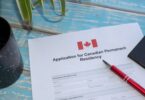Advertisements
Mold can be a nightmare for homeowners. It does not only damage properties but it can also cause serious health issues. If you discover mold in your home, one of the first questions that might come to your mind is: Does my home insurance cover mold removal and repairs?
The short answer is: It depends. Home insurance in Canada may or may not cover mold, depending on the cause of the mold and the details of your insurance policy.
In this article, we’ll break down everything you need to know about mold insurance coverage in Canada, when your policy might cover it, when it won’t, and what you can do to prevent mold issues in your home.
What is Mold and Why is it a Problem?
Mold is a type of fungus that grows in damp environments. It spreads through tiny pores that travel in the air and settle on surfaces. It can grow on walls, ceilings, carpets, and furniture. It often appears after water damage and spreads rapidly if left untreated.
Why is Mold Dangerous?
Once it starts growing, mold can cause:
- Health Risks – Mold exposure can cause respiratory issues, allergic reactions, and worsen asthma symptoms.
- Structural Damage – Mold weakens walls, ceilings, and floors, leading to costly repairs.
- Reduced Property Value – A mold-infested home is difficult to sell and could lose significant market value.
Does Home Insurance in Canada Cover Mold?
Home insurance policies in Canada generally do not cover mold damage unless it results from a covered peril. A peril is an event that causes damage, such as a fire or flood. That means that insurance coverage for mold in Canada depends on two key factors:
- The cause of the mold
- Your specific insurance policy
Let’s take a closer look at when insurance covers mold and when it does not cover mold.
When is Mold Covered by Insurance?
As we said earlier, your home insurance may cover mold if it is caused by a covered peril:
Some covered perils that might lead to mold include:
Advertisements
- Sudden and Accidental Water Damage – If mold grows as a result of a sudden event, like a burst pipe or an appliance overflow (e.g., a washing machine leaking unexpectedly), your insurance may cover both the mold removal and repairs.
- Fire Damage – If mold appears after a fire (due to water used to put out the fire), your insurance policy might help cover the cleanup.
- Storm-Related Damage – If your home is damaged by a storm (e.g., heavy rain causes a roof leak), and mold develops as a result, your insurer might cover it.
Important: Even if your insurance covers the initial water damage, you must act quickly. Most policies require homeowners to take immediate action to prevent further damage. If you delay fixing the issue and mold spreads, your insurer may refuse to pay for it.
When is Mold NOT Covered by Insurance?
In many cases, mold is not covered by home insurance. Insurers see mold as a preventable problem caused by neglect, poor maintenance, or gradual wear and tear. Here are some common reasons why mold may not be covered:
- Long-Term Leaks – If you have a slow leak under your sink for months and it leads to mold, your insurance won’t cover it because it’s considered a maintenance issue.
- Flooding – Standard home insurance policies do not cover flood damage. If mold develops after a flood, you’ll need overland flood insurance (a separate policy) to get coverage.
- High Humidity & Poor Ventilation – If mold grows due to naturally high humidity, poor air circulation, or lack of ventilation, it’s seen as a homeowner’s responsibility rather than an insurable event.
- Neglect & Delayed Repairs – If you fail to fix a leak, roof damage, or other moisture problems promptly, the insurer may deny your mold claim.
How to Prevent Mold and Protect Your Home
Since mold coverage is limited, it’s best to prevent mold growth in the first place. Here are some steps you can take to prevent it from forming:
- Fix Leaks Immediately – Check for leaks in pipes, roofs, and windows regularly. The faster you repair them, the lower the risk of mold.
- Control Humidity Levels – Keep indoor humidity levels between 30-50% using dehumidifiers and proper ventilation.
- Clean and Dry Water Spills Quickly – If water spills on carpets, furniture, or floors, dry them within 24-48 hours to prevent mold.
- Check Your Insurance Policy – Review your home insurance policy to understand what’s covered and consider additional coverage if needed.
- Improve Ventilation – Use exhaust fans in bathrooms and kitchens to reduce moisture.
- Inspect Your Home Regularly – Look for early signs of mold in basements, attics, and behind appliances.
What to Do if You Find Mold in Your Home
If you discover mold, act quickly to prevent further damage:
- Identify the Cause – Check for leaks, poor ventilation, or recent water damage to find out where the moisture is coming from and fix the issue.
- Contact Your Insurance Provider –Review your policy or call your insurance provider to see if your policy covers mold in your situation.
- Take Photos and Document Everything – This will be useful if you file a claim.
- Hire a Professional Mold Inspector – They can assess the extent of the damage and recommend next steps.
- Clean Small Mold Patches – If the affected area is small (under 10 square feet), you can clean it with vinegar or a mold cleaner.
- Hire a Mold Removal Specialist – For larger infestations, professional remediation is the safest option.
- Act Quickly – Delaying action can make the problem worse and may lead to a denied claim.
Frequently Asked Questions About Mold and Insurance in Canada
Q. Does home insurance cover mold from a leaking pipe?
- If the leak is sudden and accidental, your insurance may cover the damage, including mold removal. However, if it’s a slow, unnoticed leak, you’ll likely have to pay for repairs yourself.
Q. Will insurance cover mold from a flooded basement?
- Standard home insurance does not cover overland flooding. However, if you have flood insurance and mold forms as a result, you might be covered.
Q. How much does mold removal cost in Canada?
- Mold remediation costs vary based on the severity. Small areas may cost $500–$1,000, while large-scale infestations can exceed $10,000.
Q. Does tenant insurance cover mold damage?
- Tenant insurance typically doesn’t cover mold damage to the building itself, but it may cover your personal belongings if mold results from a covered peril.
Q. How do I know if I have mold in my home?
- Signs of mold include:
- A musty odor
- Visible black, green, or white spots on walls
- Increased allergy symptoms (sneezing, coughing, eye irritation)
Q. Can I remove the mold myself?
- For small mold patches (under 10 sq. ft.), you can clean it with household cleaners. For larger infestations, hire a professional to ensure safe and thorough removal.
Q. Is black mold more dangerous than other types of mold?
- Black mold (Stachybotrys chartarum) has been linked to respiratory issues, but all mold can be harmful if left unchecked.
Q. How can I get mold insurance coverage?
- Some insurers offer mold endorsements or add-ons for an extra fee. If you live in a high-risk area, ask your provider about additional mold protection.
Q. Will my insurance go up if I file a mold claim?
- Yes, filing a claim may increase your premiums or even make it harder to renew your policy. Consider the cost of mold removal before deciding whether to file a claim.
Q. What should I do if my insurance denies my mold claim?
- If your claim is denied, you can:
- Request a detailed explanation from your insurer
- Appeal the decision if you believe the claim was wrongly denied
- Get legal advice if necessary
Q. Can mold make me sick?
- Yes, mold can cause health problems like allergies, asthma, and respiratory infections, especially for children, seniors, and people with weak immune systems.
Conclusion
Mold damage in Canada is only covered by insurance in specific cases, like sudden and accidental water damage. If mold results from neglect, humidity, or long-term leaks, you’ll likely have to cover the costs yourself.
The best way to protect your home is through prevention—fix leaks quickly, control humidity, and improve ventilation. If you’re unsure about your coverage, reach out to your insurance provider so you will have a better understanding of what is included in your policy.
When you take the right precautions, you can easily reduce the risk of mold and avoid costly repairs down the line.
Advertisements






